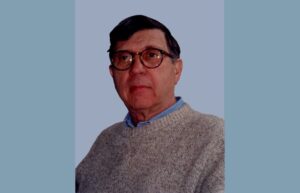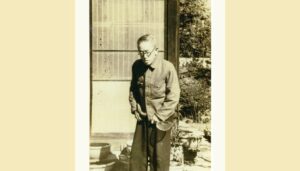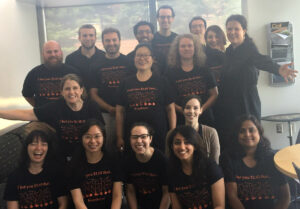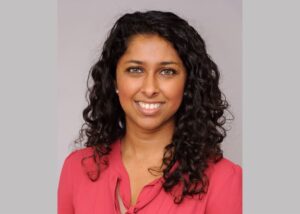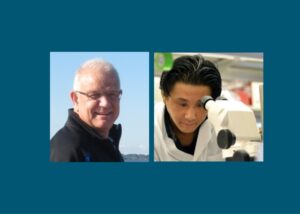Enter your address to receive notifications about new posts to your email.
Featured
-
Featured
Hybrid (conference) vigor
Four GSA communities are excited to meet in person in 2022 — and to experiment with hybrid conferences that combine the benefits of online and in-person meetings. After two years of online meetings of all kinds, we are thrilled to return to scientific conversations in person! In 2022, many of us will be together again,…
-
Featured
In Memoriam: Richard Lewontin
Dick on sabbatical and my good fortune Guest post in memory of Richard Lewontin by Thoru Pederson. When I was a graduate student in the Zoology Department at Syracuse University, a visiting professor took an office across the hall from the lab where I was stationed. He came “across” to me (not a cis-trans test…
-
Featured
100 years since the medaka’s international debut: Aida’s legacy
From a Kyoto garden to scientific discoveries. Since the 17th century, medaka fish have been bred for their beautiful colors. Shortly after the 1900 re-discovery of Mendel’s laws of inheritance, medaka began to be used for genetic studies. Recessive inheritance of the orange-red (b) and white (r) variants, female-limited appearance of the white phenotype, and an…
-
Featured
Terry McGlynn: Navigating a career and family
In the Decoding Life series, we talk to geneticists with diverse career paths, tracing the many directions possible after research training. This series is brought to you by the GSA Early Career Scientist Career Development Subcommittee. Dr. McGlynn received his PhD in Environmental, Population, and Organismic Biology from the University of Colorado. He was an…
-
Featured
NUKUs: A new primate retrocopy family with distinct functionality
Multiple divergent retrocopies of the well-characterized Ku70 gene were identified in humans and other primates. The last 63 million years of primate evolution have been strongly shaped by genetic retrotransposition; thousands of genes and proteins with new functions have evolved from retrocopies scattered throughout the genome. These retrocopies arise when retrotransposons reverse transcribe a cellular…
-
Featured
Working together during the COVID-19 pandemic, a silver lining in a trying time
Guest post by A.J. Marian Walhout, PhD. Massachusetts, March 2020: The early days of the COVID-19 pandemic that would profoundly affect us all. Labs shut down abruptly, assay trials were disrupted, some experiments in progress were thrown out. Now what? With pipettes unused on the bench and the foreseeable future unclear, how long would this…
-
Featured
PMI Expressions: Xin Jin
Join us for the PMI Expressions series, where we will get to know the 2021 cohort of GSA Presidential Members. Xin Jin Assistant Professor Department of Neuroscience The Scripps Research Institute What is your current research? My longstanding interest is to understand how brain development is shaped by genes and environment, and how these factors…
-
Featured
Kellyann Jones-Jamtgaard: A career opportunity and network building success story
Kellyann Jones-Jamtgaard is a Biological Sciences Specialist at the USDA, where she supports education grant programs. Here, she talks about her passion for communicating the value of science to society and how that led her to pursue a career in science education and policy. In the Decoding Life series, we talk to geneticists with diverse…
-
Featured
2021 Novitski Prize: Feng Zhang
Sydney Brenner famously noted that progress in genetics “depends on the interplay between new techniques, new discoveries, and new ideas, probably in that order of decreasing importance.” In the 40 years since those words were recorded, new techniques have propelled the field of molecular biology to heights barely imagined at its inception. This year’s recipient…
-
Featured
Finding a happy medium boosts ChIP-seq data quality
Every lab wants to produce high-quality, reproducible data. But when that data is destined for use by the whole community as part of an international consortium, there is an even greater incentive to ensure the highest standards. A new paper in G3: Genes|Genomes|Genetics defines a critical step for the success of widely-used gene regulation experiments. …
-
Featured
Interview with Hugo Bellen and Shinya Yamamoto on the Model Organism Screen Centers of the Undiagnosed Disease Network
This is a guest post by Sarah Marshall, originally published in the Undiagnosed Disease Network’s Participant Engagement and Empowerment Resource (UDN PEER). In April 2021, I had the pleasure of interviewing Drs. Hugo Bellen [2021 GSA President] and Shinya Yamamoto about their work at the Model Organisms Screening Center (MOSC) at Baylor College of Medicine,…


